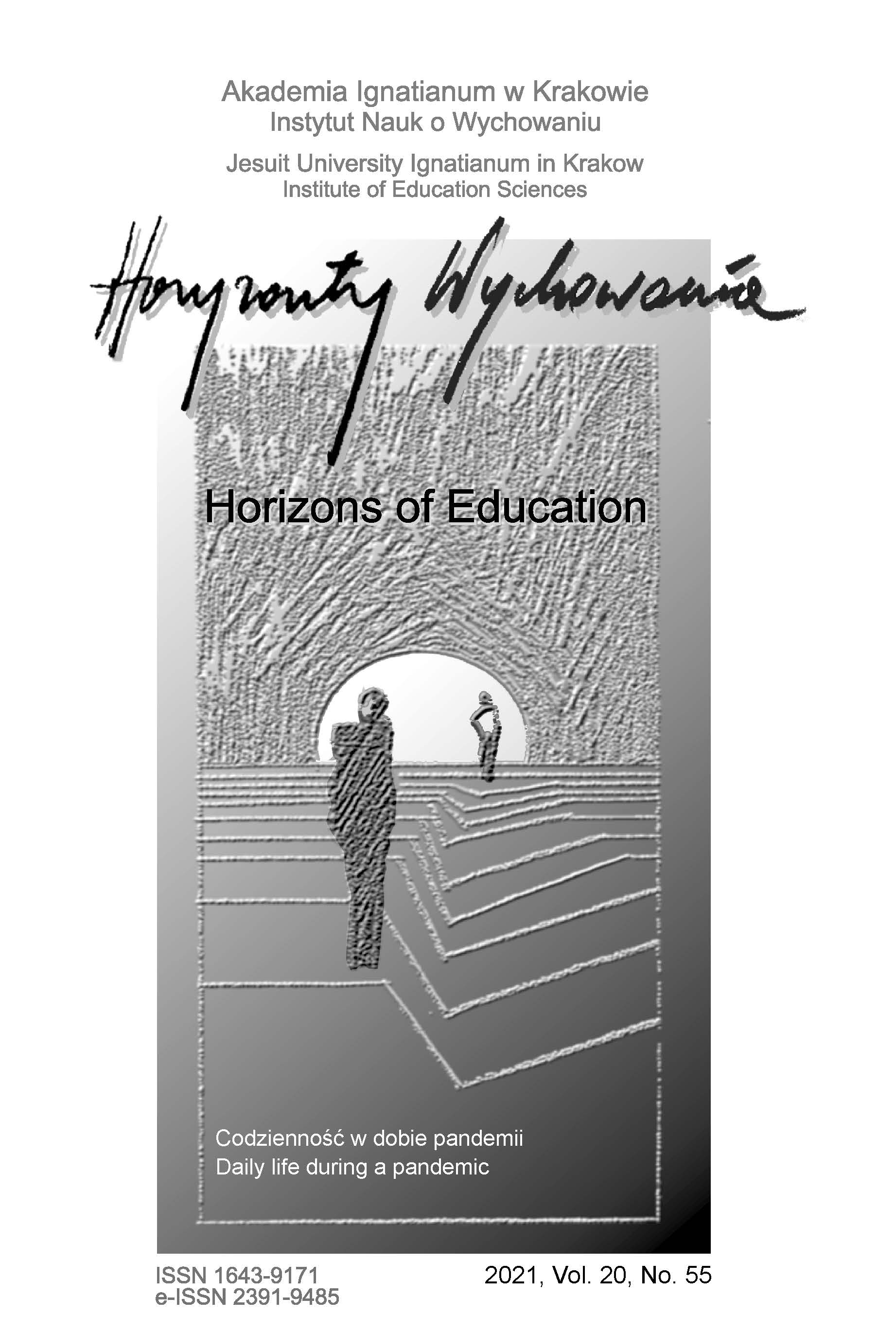Social Roles of Grandparents in an Ageing, Modern Society
Abstract
RESEARCH OBJECTIVE: The authors’ aim is to create an original typology of the social roles of grandparents in modern society. The reflection is set in the context of demographic changes related to ageing processes and theories of life cycles.
THE RESEARCH PROBLEM AND METHODS: The main thesis is that despite the significant sociocultural changes occurring in the context of the intensifying aging processes of societies, it is possible to indicate the multiplicity of roles played by grandparents. The article is based on two research projects conducted among women aged 50‑64 and men aged 55‑69 living in the Lubuskie Voivodeship. The data used has a qualitative character, and the empirical basis is 110 written biographical stories.
THE PROCESS OF ARGUMENTATION: The background of the study is data from public statistics that illustrate the deepening ageing processes of the region’s population. Unfavourable demographic processes are intertwined with sociocultural changes related to the change of gender roles, professional activity, and free time. This element is related to the concept of life phases. An extensive theoretical introduction precedes the analysis of the results of research on the typology of the social roles of women and men as grandparents.
RESEARCH RESULTS: An original typology of the roles of grandparents in the modern world was proposed. The mechanisms related to the roles focus mainly on meeting the needs of the family in the first place. We can draw an axis of traditional vs. modern, which leaves room for some other indirect possibilities (e.g. space for female self‑realization). However, it depends on the sociocultural factors and scripts implemented at earlier stages of family life.
CONCLUSIONS, INNOVATIONS, AND RECOMMENDATIONS: There is no uniform and coherent grandfathering pattern, and there is a clear difference between the sexes on the axis of involvement in caring functions.
References
Boyd, D. & Bee, H. (2008). Psychologia rozwoju człowieka (J. Gilewicz & A. Wojciechowski, Trans.). Wydawnictwo Zysk i S‑ka.
Brzezińska, A. & Trempała, J. (2000). Wprowadzenie do psychologii rozwoju. Gdańskie Wydawnictwo Psychologiczne.
Erikson, E. (2004). Tożsamość a cykl życia (M. Żywicki, Trans.). Wydawnictwo Zysk i S‑ka.
GUS. (2014). Gospodarstwa domowe i rodziny. Narodowy Spis Powszechny 2011. Główny Urząd Statystyczny.
GUS. (2019). Sytuacja demograficzna województwa lubuskiego w 2018 r. Główny Urząd Statystyczny.
Kempińska, U. (2015). The role of seniors in the family. Pedagogika Społeczna, 4(58), 81‑96.
Levinson, D.J. & Levinson, M. (1996). The seasons of women’s life. Knopf.
Okólski, M., 2004, Demografia. Wydawnictwo Naukowe Scholar.
Okólski, M. & Fihel, A. (2012). Demografia. Współczesne zjawiska i teorie. Wydawnictwo Naukowe Scholar.
Oleś, P. (2012). Psychologia człowieka dorosłego. Wydawnictwo Naukowe PWN.
Szatur‑Jaworska B. (2012), Sytuacja rodzinna i więzi rodzinne osób starych i osób na przedpolu starości. In M. Mossakowska, A. Więcek & P. Błędowski (Eds.), Aspekty medyczne, psychologiczne, socjologiczne i ekonomiczne starzenia się ludzi w Polsce (pp. 419‑448). Termedia Wydawnictwa Medyczne.
Titkow, A. (2007). Tożsamość polskich kobiet. Ciągłość, zmiana, konteksty. Wydawnictwo IFiS PAN.
Trzop, B. (2013). Dojrzałe, spełnione, niezależne…? Kobiety 50+ w socjologicznym zwierciadle. Dom Wydawniczy Elipsa.
Trzop, B. (2016). W poszukiwaniu dojrzałej tożsamości: kim są kobiety i mężczyźni 50+ we współczesnym społeczeństwie polskim? Rocznik Lubuski, 42(1), 261‑277.
Trzop, B., Umiastowska, D. & Wachowiak, A. (2017). Światy kobiet. Nowe spojrzenie na narracje i doświadczenia polskich kobiet. Wydawnictwo Texter.
Tyszkowa, M. (1991). Społeczne role dziadków i babć w rodzinie. Problemy Rodziny, 175(1), 11‑20.
Vasta R., Haith M.M. & Miller S.A. (2004). Psychologia dziecka (M. Babiuch, Trans, 3th ed.). Wydawnictwa Szkolne i Pedagogiczne.
Copyright (c) 2021 HORIZONS OF EDUCATION

This work is licensed under a Creative Commons Attribution-NoDerivatives 4.0 International License.
Authors who publish in this journal agree to the following terms:
- Authors retain the copyright to their work while granting the journal the right of first publication. The work will be simultaneously licensed under a CC BY-ND license, which permits others to share the work with proper credit given to the author and the original publication in this journal.
- Authors may enter into additional, non-exclusive agreements for the distribution of the published version of the work (e.g., posting it in an institutional repository or publishing it in another journal), provided that the original publication in this journal is acknowledged.
We allow and encourage authors to share their work online (e.g., in institutional repositories or on personal websites) both before and during the submission process, as this can foster beneficial exchanges and lead to earlier and increased citations of the published work. (See The Effect of Open Access). We recommend using any of the following academic networking platforms:





